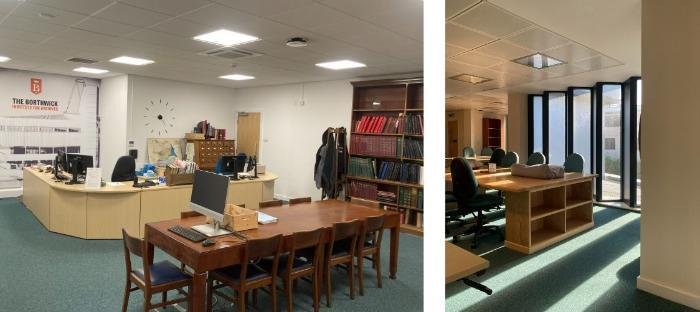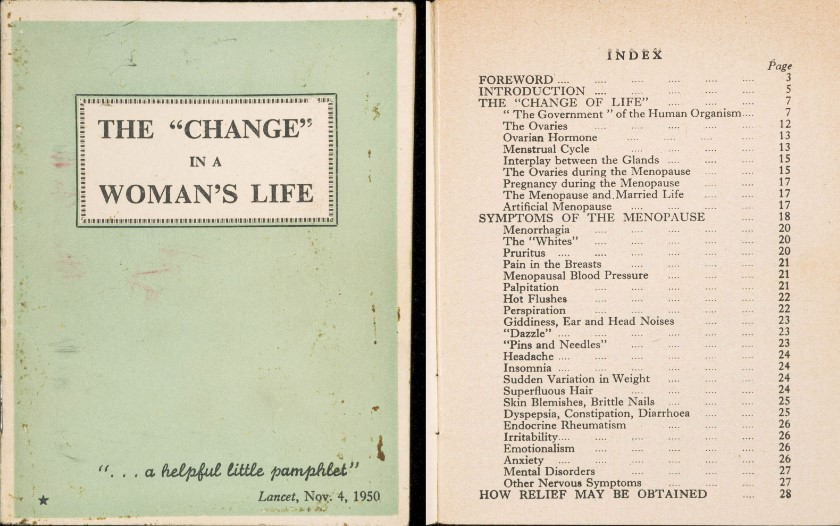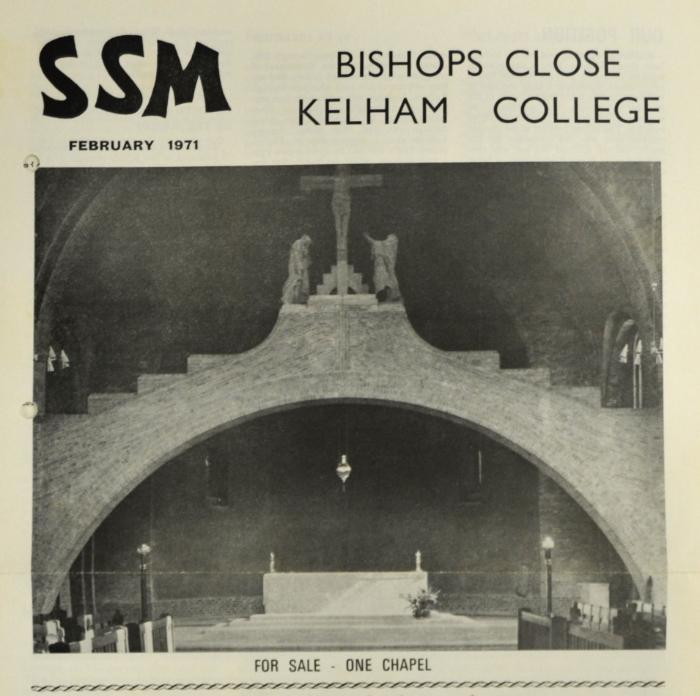Borthwick Newsletter - October 2024
Posted on 30 September 2024
October in the Archives - delve into our catalogues with this month’s featured description
Certified copy of the will of Robert Vawsse of York, tapiter, proved 9 October 1578 , in which he leaves his dwelling house in St Saviourgate with a cottage, and the lease of the adjoining house, to his wife, Jayne, for her life, and then to his son, Cutbarte (Cuthbert) [MD/100/4. NB. A tapiter was a maker or weaver of tapestry],
What’s New
October is always a very busy month on campus with new and returning staff and students and frequent classes and workshops here at the Borthwick. This month alone we’ll be providing support (by way of teaching space and original archival documents) for sessions on archaeology and buildings history, mediaeval literature, early modern material culture, and the Petyt rare books collection, as well as teaching classes on palaeography and taking part in a public history module using the extensive archive of the Company of Merchant Adventurers of the City of York. However we are of course still very much open to our usual researchers and enquiries so if you have a burning question for us about our archives, remember you can always drop us a line via phone, email, letter or pop into our searchroom.
Meet the Searchroom Team
If you do get in touch your enquiry will most likely be answered by one of our searchroom team: Lydia Dean (who is our Research Services Archivist), Dr Nicholas Melia and Neil Adams. Between them, they’ve worked here for 30 years (!) and in that time they’ve got to know a little bit about most of our 700+ collections, and a lot about some of the collections they’ve been lucky enough to work on in more depth. You may not be aware that Lydia was responsible for cataloguing the huge Yorkshire Wildlife Trust Archive and completing the recent catalogue of Company of Merchant Adventurers of the City of York - making this available online for the very first time. Nick in turn works on many of our music archives and is currently creating catalogues for the Trevor Wishart Archive and the Music in the Secondary School Curriculum project archive; while Neil has converted a heroic number of parish archive lists into online catalogues as well as being very busy cataloguing the archives of former university Vice Chancellor Sir Ron Cooke and the builder William Aneley.

The searchroom is based on the first floor of Raymond Burton library and is open to everyone, whether you’re a member of the University of York, another academic institution, or simply conducting your own research. Over the last year, the team has answered over 6,700 emails, letters and phone calls, and, with the invaluable assistance of Information Assistant for Digitisation Cathy Flockton, sent out over 2,500 copying orders to researchers all over the world.
We’re really lucky to have such a wide range of fascinating collections available on-site, and to help our researchers to access those both remotely and in person.
New Accessions
We took in fifteen new accessions in September. Ten of these were additions to the University of York Archive, including papers of the Heslington Lectures Committee (with recordings of the lectures), student publications and magazines, degree programmes and a fantastic cache of material from the university’s own Douglas Adams Society. For those of you unfamiliar with the name, Douglas Adams was a British author and satirist best known for creating The Hitchhiker’s Guide to the Galaxy and for his work on Doctor Who. The Society produces a regular newsletter called ‘DougInfo’ and holds weekly events for members. The archive dates back to 1997 and as they’re still very much an active society no doubt it’ll continue to grow.
We were also fortunate to receive an important addition to the archive of the Society of the Sacred Mission, thanks to former members Dr Dominic Tye and Alex Adkins who joined the Society in the 1950s. The documents were collected by Dr Tye during his long career with the Society and together, he and Alex Adkins have added extremely useful explanatory notes and contextual information to help tell the story of the final years of Kelham College. The Society of the Sacred Mission was an Anglican religious order founded in 1893 which recruited and trained men from poorer backgrounds for ordination into the priesthood - a somewhat radical approach in an era when most churchmen still came from middle and upper class families and attended university.
From 1903 its mother house and theological college was at Kelham Hall in Nottinghamshire and it was here that members studied, socialised, and prepared for their future career in the church. While we already hold the main institutional archive of the Society, the papers of Dr Tye add an extremely valuable personal perspective on the final fifteen years of the college as the impact of broader social, cultural and religious changes brought about its controversial - and permanent - closure.
New Catalogues
Number of archival descriptions on Borthcat on 1st October 2024: 136,891
In September we added three new catalogues to Borthcat for the parishes of Upper Poppleton, Pocklington, and Bishop Wilton. The largest and oldest of these is that of Pocklington which dates back to 1599. Its parish church of All Saints is known as the ‘Cathedral of the Wolds’. Small wonder when its 30 metres high tower is visible for miles around thanks to the relative flatness of the landscape. The parish archive contains many of the items you’d expect: records of the parochial church council, details of restoration work on the church and its churchyard, school records, and charitable bequests, but there are also two rather interesting additions that have, from time to time, made their way into the local press - and even inspired a town festival. In 1890, while carrying out restoration work on the church, a group of workmen buried a glass bottle underneath a plinth. The bottle contained a record of the work carried out and a copy of a local newspaper. The mini time capsule was accidentally rediscovered in 2005 and, after some press coverage, was carefully reburied with a 2005 issue of the Pocklington Post for future custodians to discover.
More notable still is a single entry in the second Pocklington parish register (PR/POCK/2) recording the burial of the infamous Flying Man of Pocklington, Thomas Pelling. Pelling was a travelling showman who toured the country in the early 18th century, performing dare-devil stunts and acrobatics.
![The burial entry for Thomas Pelling, the 'Flying Man' [PR/POCK/2] The burial entry for Thomas Pelling, the 'Flying Man' [PR/POCK/2]](/media/borthwick/images/Flying_Man_Entry-700x372.jpg)
In 1733 he arrived at the busy market town of Pocklington where he intended to ‘fly’ from the top of the church tower down to the marketplace along a rope, watched by crowds of onlookers. Unfortunately his equipment failed him and instead of flying he fell, hitting the edge of the chancel and fatally injuring himself. He was buried in Pocklington churchyard and in recent years he has been remembered at the town’s ‘Flying Man Festival’. You can read more about Thomas Pelling and his fellow 18th century daredevils on the Borthwick Blog.
News from Conservation
A key part of our Conservation team’s work is ensuring that archives are stored safely and this begins on the day they arrive. The condition of every new addition to the archives must be checked by staff before it can be stored in our strongroom to make sure we are not introducing damp, mould or pests into our existing collections. Usually a preliminary check is carried out by searchroom staff and if they spot anything of concern a conservator is called in to take charge of the item. In September we took in a 19th century picture that was found to contain live silverfish inside the frame. Silverfish are an insect particularly fond of paper, photos and book bindings, so conservator Catherine was on hand to take the picture and frame away to our Isolation Room where it will be treated and repackaged before transfer to the strongroom.
Other additions might be happily bug free but pose a risk in other ways. A recent accession to the Vickers Scientific Instrument archive contained some broken glass plate negatives. Devising a way of safely packaging the broken glass pieces so that they can still be accessed is an ongoing conservation challenge but one which will, we hope, make it easier to care for similar items in the future.
Borthwick Out and About
We began the month with the launch of our two new exhibitions - the first on the work of the Women’s Land Army in North Yorkshire during the Second World War, and the second on the history of chapbooks. Both will be running throughout the autumn and are open to the public, for free, in the Raymond Burton wing of the main university library.
The exhibitions proved popular with prospective students during the university Open Days on the 6th and 7th September. As usual the Borthwick contributed a display of original archives, with staff on hand to answer questions and talk about how our collections are used in teaching and research. Open Days are always a great opportunity to showcase some of our more unusual or interesting items and over the course of the two days we had nearly 300 visitors!
On the 19th September we welcomed Skipwith Heritage Group for a visit as part of their National Lottery Heritage Fund community project ‘Searching for Skipwith’, with a tour and document display organised by Access and Digital Engagement Archivist Laura Yeoman. Laura will be running another session in October for the City of York and District Family History Society, this time looking at the York Cause Papers, an enormous collection documenting the varied, and occasionally scandalous, work of the church courts from 1300-1858. You can read more about them here.
Our Collections Information Archivist Sally-Anne Shearn hosted former members of the Society of the Sacred Mission for a visit on the 16th September to deposit some very exciting new archives and talk about the history of the theological college at Kelham (see ‘New Accessions’ for more details). And on the 20th September our Alcoholics Anonymous Great Britain Archivist, Emma Hollis, organised a tour and display of documents and artefacts for AA members and was able to update them on her work on the archive which was first deposited with us in 2009 (and which has grown substantially in the years since).
Archive of the Month: Printed pamphlets of advice for nurses and women
What is it? A small collection of pamphlets on various aspects of women’s health, including menstruation and menopause, as well as medical advice for nurses.
Where can I find it? The archive is part of the Miscellaneous Documents collection and can be found on Borthcat.
Why is it Archive of the Month? The Borthwick has an extensive collection of health archives, including the institutional records of psychiatric, maternity and general hospitals in and around York. Whilst these extensive archives are invaluable for understanding the evolution of public healthcare over the centuries, our smaller, more eclectic health collections should not be overlooked, whether that’s our series of health related private deposits, or the cache of guides and pamphlets tucked away among our Miscellaneous Documents and chosen as this month’s featured archive. At a time when the medical establishment was still overwhelmingly male and too many aspects of women’s healthcare were considered taboo, these inexpensive editions were clearly intended for a female audience - whether that was nurses and midwives beginning their professional careers, or teenage girls and middle aged women facing bodily changes they might have little understanding of.
The collection includes ‘The Nurse’s Dictionary of Medical Terms and Nursing Treatment’ and ‘The Nurse’s Book of Useful Information’. The former was one of many similar guides written by Honnor Morten, who trained as a nurse in the 1880s and went on to campaign for Women’s Suffrage and equal pay. The latter was funded by the California Fig Syrup Company and, unsurprisingly, makes sure to mention the many health benefits of the humble fig alongside the medical advice. Both were designed to be handy reference guides for nurses, one of the few medical careers open to women in the early twentieth century.
Perhaps more interesting still however are two pocket-sized pamphlets intended for the general public: ‘The Dawn of Womanhood’ and ‘The Change in a Woman’s Life’. Both can be tentatively dated to the 1940s and 1950s; one sets out to explain menstruation and puberty, and the other the menopause.
-700x428.jpg)
We often bring them out for public displays and for the modern reader they can be amusing and even frustrating. The booklet on menstruation, for example, relies heavily on flower and plant metaphors to explain the facts of life and makes such questionable claims as ‘menstrual pains tend to cease with marriage, but only if the marriage is happy.’

But for the most part the pamphlets aim to be factual and accessible - imperfect guides, but very necessary ones nonetheless. In a century that saw women make enormous advances in almost every area of life, the importance of access to information about the female body and its development cannot be overstated. Together this collection captures that dissemination of knowledge, repackaging what had once been the province of the few (and the male) into pocket sized pamphlets for all.
We’ll be back in November with more news and events from the archives!


